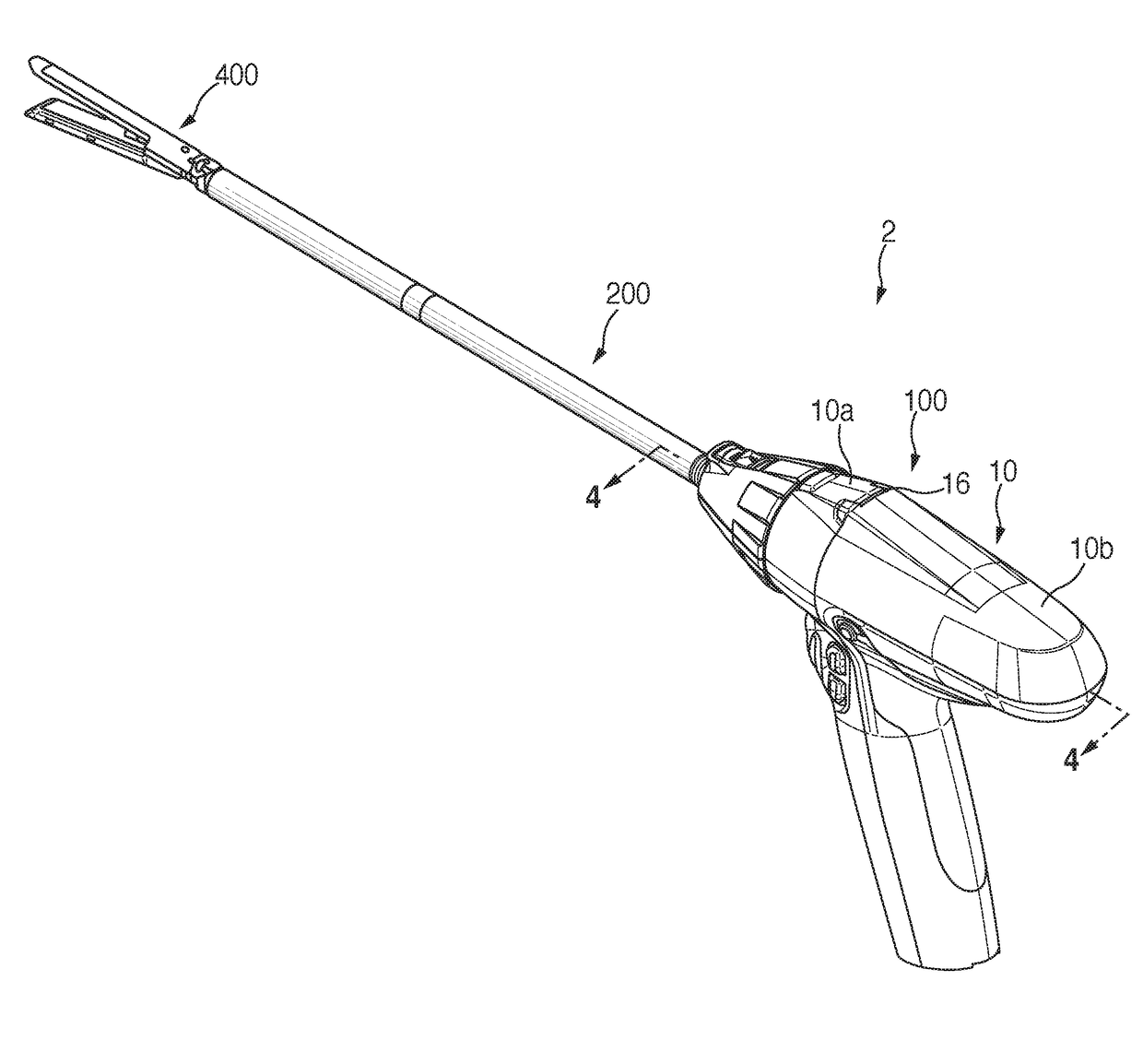Autoclavable load sensing device
a load sensing device and autoclave technology, applied in the field of surgical devices, can solve the problems of affecting the operation efficiency the inability of the end effector to be compatible with the surgical device and/or the handle assembly that uses rotary motion, and the need to be designed to withstand multiple cleaning and autoclave cycles
- Summary
- Abstract
- Description
- Claims
- Application Information
AI Technical Summary
Benefits of technology
Problems solved by technology
Method used
Image
Examples
Embodiment Construction
[0028]Embodiments of the presently disclosed surgical devices, and adapter assemblies for surgical devices and / or handle assemblies are described in detail with reference to the drawings, in which like reference numerals designate identical or corresponding elements in each of the several views. As used herein the term “distal” refers to that portion of the adapter assembly or surgical device, or component thereof, farther from the user, while the term “proximal” refers to that portion of the adapter assembly or surgical device, or component thereof, closer to the user.
[0029]The present disclosure provides an autoclavable load sensing device that may be disposed over any movable component (e.g., shaft) of a surgical device. The load sensing device is configured to measure the strain on the movable component and provide feedback to a controller of the surgical device. The load sensing device includes a housing and an insulated conductive element, e.g., an insulated electrical wire, d...
PUM
 Login to View More
Login to View More Abstract
Description
Claims
Application Information
 Login to View More
Login to View More - R&D
- Intellectual Property
- Life Sciences
- Materials
- Tech Scout
- Unparalleled Data Quality
- Higher Quality Content
- 60% Fewer Hallucinations
Browse by: Latest US Patents, China's latest patents, Technical Efficacy Thesaurus, Application Domain, Technology Topic, Popular Technical Reports.
© 2025 PatSnap. All rights reserved.Legal|Privacy policy|Modern Slavery Act Transparency Statement|Sitemap|About US| Contact US: help@patsnap.com



